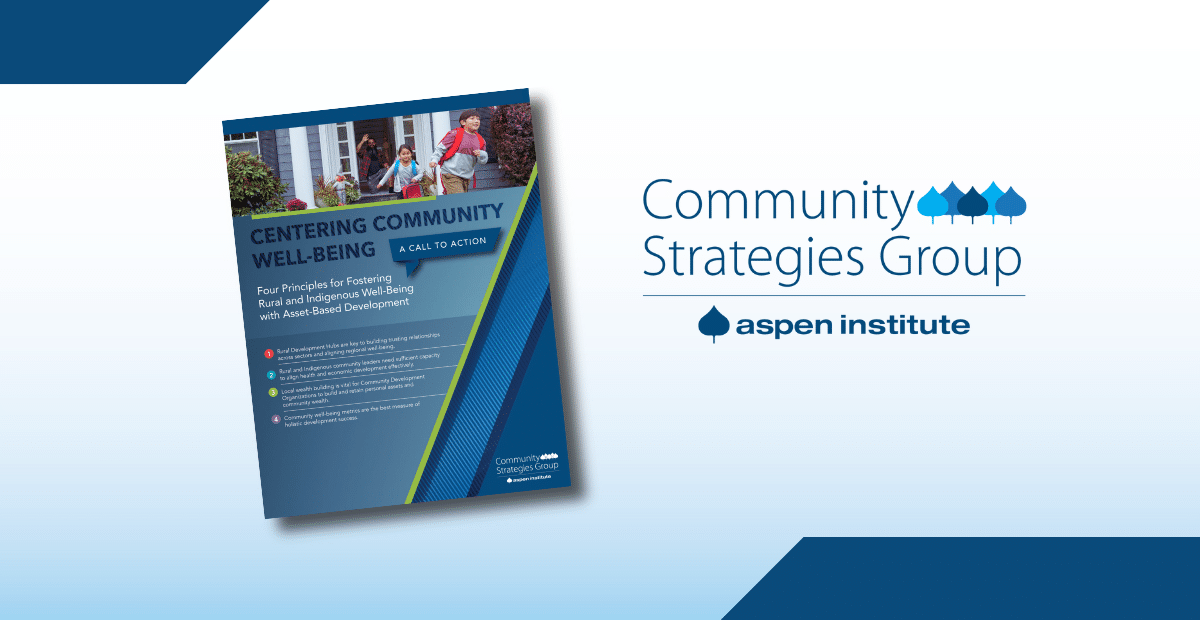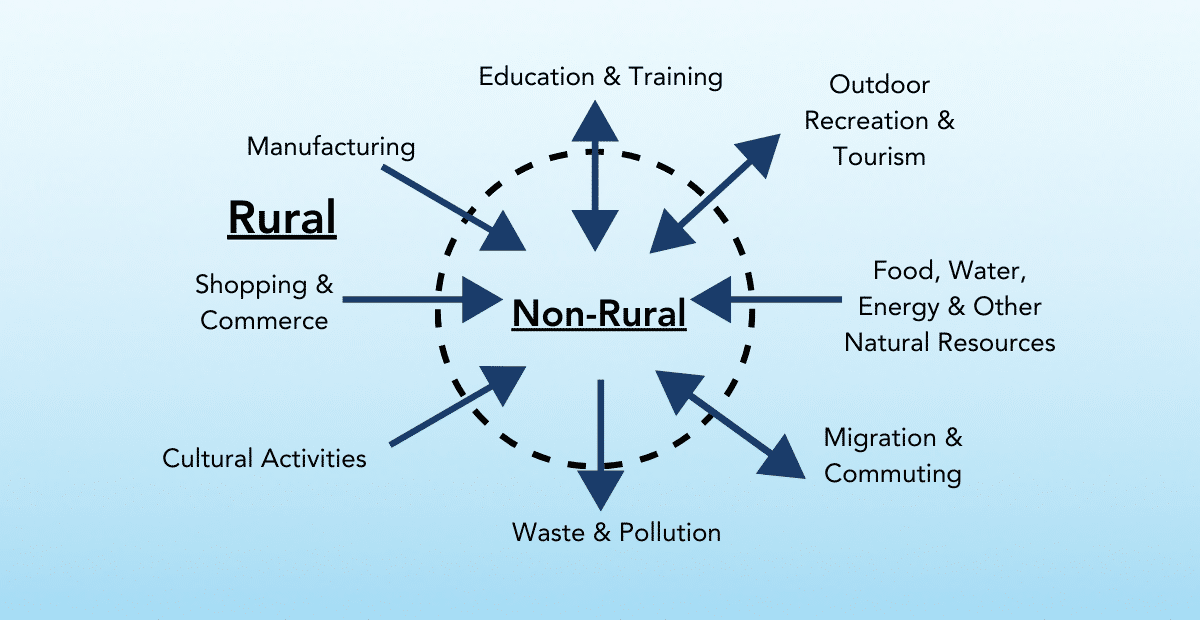Creating equitable rural prosperity relies on integrating multiple fields engaged in communities and regions. We are especially focused on the intersection of health equity efforts and economic development in rural places. A significant opportunity to bring these two fields together is in the area of community and regional assets and how they can impact health equity while at the same time increasing equitable economic development.
Why focus on assets as a pathway to health equity?
Asset-based development has long been a frame that economic and community developers, advocates, and stakeholders have used to grow wealth locally, support marginalized groups, and advance development in ways that grow local ownership by focusing on the resources and expertise within the region. From the health side, growing local and regional health workforce assets means well-staffed health facilities, adequate community health workers, and practitioner groups that can help extend access to care for underserved areas and populations. A shared focus on local and regional rural assets can help align a multisector partnership, leading to more equitable outcomes for all residents.
In their Thrive Rural Field Perspective, Rural Development and Rural Health Practices: Trends and Opportunities for Alignment, our partners and brief authors, Brain Dabson and Victoria Faust, identify an alignment strategy that relies on asset-based strategies to grow health equity. Part one of this strategy is to expand our definition of community health and wealth by using frameworks (like the Thrive Rural Framework) that include a range of indicators connected to the vitality of place and provide a concrete way to determine progress toward community goals. Secondly, measuring and valuing community assets helps health equity efforts assess their impact over time while also providing policymakers, funders, and community-based practitioners a common language rooted in the assets that the community values most.
Regional Health Equity Assets
In addition to deploying the Thrive Rural Framework in your community, the resources below may help your community blend economic and community development efforts with health and healthcare efforts, to advance health equity in your region.
- County Health Rankings and Roadmaps estimate that social and economic factors like education, income, and family determine 40% of a person’s health outcomes. This is larger than traditional health factors like clinical care (20%) or health behaviors (30%). Using frameworks that integrate social determinants into their model can help your health equity effort articulate why focusing on economic factors like job quality or local ownership are crucial to growing a healthy community.
- Rural hospitals and their healthcare workforce are significant assets for any community. The American Hospital Association (AHA) estimates that every dollar a rural hospital spends generates $2.30 of additional value for the community. These assets are crucial to a functioning regional economy and overall quality of life, as insurance and workers’ compensation rates are tied to proximity to emergency services. Yet as AHA reports, rural hospitals are under severe economic pressure, and hospital closure rates are at an all-time high, particularly in those states without Medicaid expansion.
- The National Rural Health Center has several resources related to working within and in partnership with health systems to advance health equity, including a podcast. The Rural Health Information Hub also has a health equity toolkit with resources to help integrate health equity into a rural health effort. Building Healthy Places Network has many rural health equity resources, including a playbook on bridging multisector coalitions.
- Communicating health equity efforts and their value to rural regions can be a real hurdle in many rural contexts because of political polarization. The Centers for Disease Control and Prevention developed a toolkit to help share lessons, insights, and the value of health equity work with inclusive techniques. Similarly, a new Thrive Rural case study explores how the West Virginia Community Development Hub communicates effectively across polarized communities.
- Access to healthy food is another factor that can promote better health and regional economic development. One of the newest Thrive Rural research briefs, Using Networks to Build Collaborative and Equitable Food Systems, explores how local food systems can be vehicles for collaboration and racial equity among multiple stakeholders and networks. Food sovereignty is a vital part of Native American health equity efforts. Protecting and promoting traditional foods is essential to restoring and strengthening cultural lifeways disrupted by centuries of colonization while simultaneously promoting sustainable land management and Native-led economic development. Another program at the Aspen Institute, Aspen Food & Society, has great resources on Food as Medicine and Conversations on Food Justice.
Questions for the Field
What particular regional assets lead to better or stronger health equity outcomes? How do we ensure access to regional assets (outdoor recreation infrastructure, a community college system, etc.) by low-income and communities of color to improve health equity outcomes?
In the quest for health equity, how can the development of regional assets help break down barriers and increase prosperity for people, families, and communities that have been structurally discriminated against?
What’s next for Aspen CSG?
Our next Thrive Rural Action Learning Exchange (TRALE) focuses on: What will it take to align mindsets so that stakeholders in rural development and health hold a shared understanding of what constitutes “equitable prosperity” in rural regions and Native nations communities and collectively drive policy, practice, and resources towards producing those results?
We look forward to continuing to explore this topic with you. Please reach out if you have insights, examples, or resources you want to share.
This reflection was written by Devin Deaton, Action Learning Manager, and the entire Aspen CSG team contributed to its production.
One of the goals of the Thrive Rural effort is to regularly synthesize insights we are learning through our engagements with the wider field of rural prosperity. This blog is part of a series that leans into and synthesizes broader field insights, using the framework as a lens. Not only can we pull together and show commonalities across seemingly disparate topics, but we can also illuminate gaps and areas to improve the Thrive Rural Framework.







